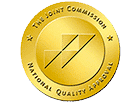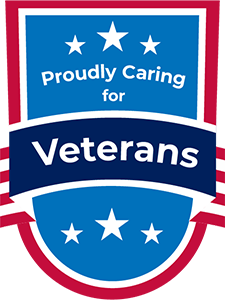While medications have long been a part of treating substance use disorders, many people don’t know the different types of FDA-approved medications available to them in MAT for opioid addiction. Two of the most popular medications used for treating opioid addiction are buprenorphine and Suboxone. If you’re looking to find the difference between buprenorphine vs Suboxone, comparing the two medications can help you understand what each has to offer during treatment for opioid use disorders.
To make well-informed decisions when joining a medication-assisted treatment program for opioid addiction, it is important to know what each medication is, the differences and similarities, and how they help in recovery. By understanding the differences between buprenorphine vs suboxone, you can also know the potential side effects you may experience if you don’t take either medication as prescribed
What Is Buprenorphine?
The National Library of Medicine describes buprenorphine as a partial opioid agonist medication. This means that it binds to the same receptors in the brain as other opioids without producing the same level of euphoria or depressant effects. Unlike heroin or methadone, buprenorphine delivers mild euphoric effects, making the potential for abuse lower than stronger opioids.
This medication comes in the form of a tablet or film that dissolves under the tongue. When starting MAT with buprenorphine, people start at a low dose that gradually increases over time. Typically people take the medication once a day, but some people may need to take it twice, depending on the severity of their symptoms.
Some people may also use a buprenorphine patch to provide more long-lasting effects. It is also possible to receive a buprenorphine injection, but this is typically less preferred due to this method of administration’s briefer effects.
How Long Does Buprenorphine Stay In Your System?
If you are considering taking buprenorphine, it is important to know what to expect from this medication. One of the most important things to know is just how long the drug will remain in your system.
A standard dosage of buprenorphine can produce effects that last for several hours, with high doses of this medication lasting up to a few days. Standard drug tests can detect Buprenorphine for up to 10 days, although more specialized tests may be able to detect this medication for longer.
What Is Suboxone?
According to the FDA, Suboxone is another research-backed medication for the treatment of opioid addiction. All Suboxone pills contain a combination of buprenorphine and naloxone. It is a Schedule III drug, which means that while it has an accepted medical use, it also has a moderate potential for abuse.
The buprenorphine in Suboxone helps to reduce withdrawal symptoms and cravings without causing the same euphoric effects as other opioids, while its naloxone ingredient blocks the effects of opioids.
Suboxone is typically taken once a day as a sublingual tablet or film. It can also be taken as a buccal film, which is placed between the cheek and gum. This medication is typically distributed at a Suboxone clinic or as part of an addiction treatment process to make sure it is being taken safely and responsibly.
How Long Does Suboxone Stay In Your System?
When taking Suboxone, the amount of time this medication can stay in your system can vary based on how much you are taking, your physiology, and various other factors. Generally, though, the buprenorphine in Suboxone can give this medication a particularly long half-life.
This means its effects can last for several hours, and its detection rates can extend anywhere from a few days to several months for more specialized drug tests.
Buprenorphine vs Suboxone: Understanding the Difference
During medication-assisted treatment (MAT), addiction treatment providers can prescribe either medication in combination with psychosocial support to provide comprehensive care for individuals struggling with opioid use disorder.
While buprenorphine and Suboxone are both medications for opioid addiction, there are still a few distinctions between them. It is important to know what these differences are when making the right treatment choice in the buprenorphine vs suboxone debate.
For starters, buprenorphine is a partial opioid agonist, which means that it binds to opioid receptors in the brain but does not activate them as strongly as full opioid agonists, making it less likely to cause euphoric effects and overdose.
On the other hand, Suboxone is a combination medication containing buprenorphine and naloxone. Unlike buprenorphine, naloxone is an opioid antagonist, which means that it completely blocks the effects of opioids. For this reason, most people know naloxone—or Narcan—as the opioid overdose reversal drug. While naloxone can reverse the effects of an opioid overdose, it also prevents the effects of any amount of opioid abuse. This is why Suboxone contains naloxone.
The unique design of Suboxone pills only releases the naloxone as a fail-safe. If an individual crushes the Suboxone pill to inject or snort the drug, the protective casing around naloxone breaks. In doing so, naloxone mixes with buprenorphine, canceling out any euphoric effects. For this reason, the medication’s structure helps to prevent people from abusing Suboxone.
However, these medications can have negative side effects when abused, including the risk of addiction. To avoid developing Suboxone addiction, take the medication as prescribed and do not mix it with other substances.
When taken as directed, buprenorphine and Suboxone are effective in treating opioid addiction. Ultimately, the best medication for you will depend on your individual needs and preferences.
The Opioid Addiction Treatment Process
If you are struggling with opioid addiction, medications are not your only course of action during treatment. There are several steps to treating an opioid use disorder, including:
- Detoxification: Medical detox is necessary to break your physical dependence on opioids. This typically includes medical care, nutritional counseling, and emotional support. All of these efforts seek to help manage your withdrawal symptoms and cravings during the early stages of recovery.
- Medication-assisted treatment (MAT): This is the use of medications in combination with counseling and behavioral therapy to treat opioid addiction. Medications like Buprenorphine and Suboxone can help to reduce cravings and withdrawal symptoms, as well as prevent relapse.
- Counseling and therapy: These are essential parts of opioid addiction treatment. Both can help you address the underlying causes of your addiction, learn coping skills, and develop a strong support network.
- Relapse prevention: Relapse is a common part of the recovery process. Relapse prevention planning helps you identify the best ways you can maintain your sobriety. For instance, continuing to take medication, attending counseling sessions, and staying connected to your support network.
The opioid addiction treatment process can be long and challenging, but it is possible to recover. With the right support and education about buprenorphine vs Suboxone, people can recieve the treatment they need to recover. At Royal Life Centers, we provide the effective treatment and support you need to achieve long-term recovery.
Opioid Addiction Treatment at Royal Life Centers
At Royal Life Centers, we offer a variety of treatment options for those struggling with opioid addiction. Our medication-assisted treatment (MAT) services help reduce cravings, ease withdrawal symptoms, and address underlying disorders that often accompany addiction. In doing so, our guests are able to maintain and sense of comfortability while focusing on recovery. Our comprehensive opioid addiction treatment programs also incorporate counseling, therapy, education, and holistic wellness services through each level of care.
When you choose to overcome your addiction at our facility, you gain access to a full continuum of care, including:
- Medical detox
- Residential treatment
- Partial hospitalization
- Intensive outpatient treatment
- Medication management
- Sober living and aftercare support
Whether you are struggling with illicit opioids, buprenorphine withdrawal, Suboxone withdrawal, or other substance abuse concerns, our treatment programs can help you recover.
Our experienced team of addiction specialists will work closely with you to identify the best treatment for your needs. If you are concerned about a loved one’s opioid use or have questions about our treatment options, please contact us at 877-RECOVERY.





